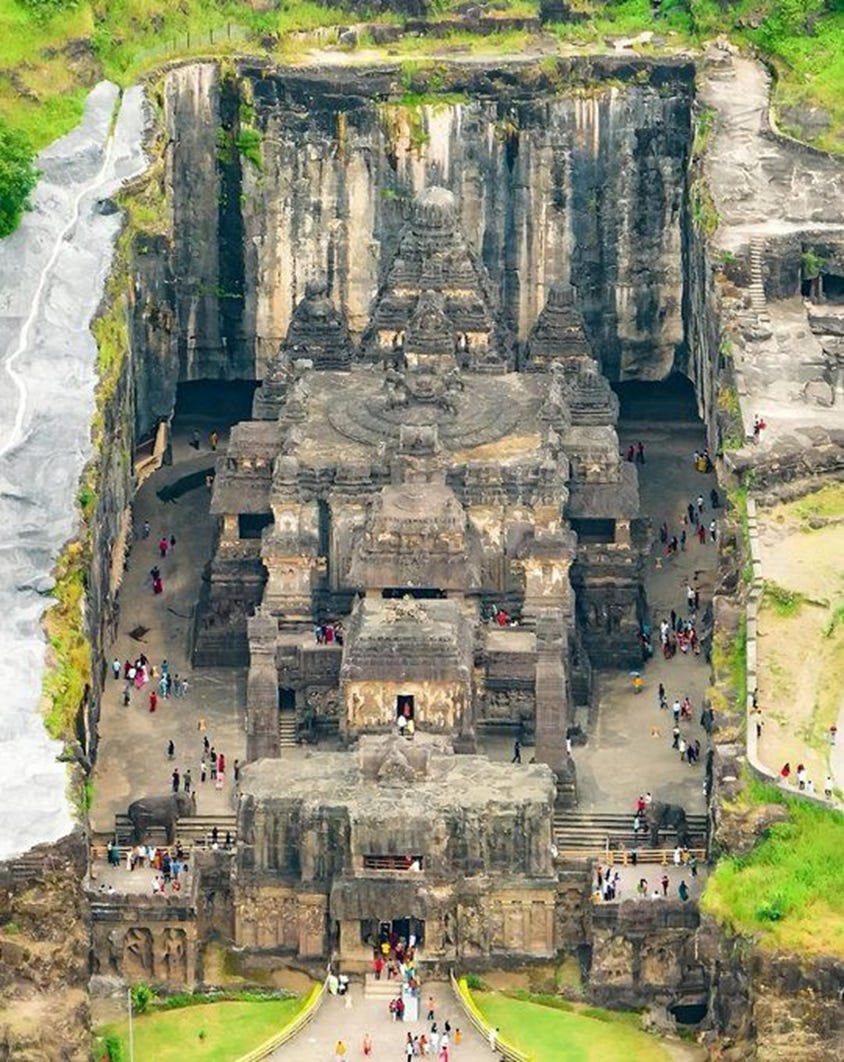We left off at the divine architect, Revanta, chiseling away to reveal the dream temple.
Welcome to the present!
Chapter 4: The Divine Geometry: Frequencies
The sun had barely lifted its veil over Ellora when Aanya stepped into the inner sanctum once more. The morning light spilled softly across the weathered basalt, painting golden outlines along columns and corridors, as though the temple itself were awakening to a deeper truth.
She ran her fingers along the grooves of a pillar—ancient, precise, and smooth as if caressed by time rather than eroded by it. With each visit, she noticed something new: a line too perfect, a curve too symmetrical, a rhythm in the design that seemed to echo the pulse of the Earth itself.
It wasn’t merely architecture—it was geometry with a heartbeat.
Dr. Nandakumar, her professor, had once referred to the Kailasa temple as “a frozen hymn in stone.” But standing here now, Aanya saw it as more—a codex, carved not only to honor Lord Shiva but to reflect the very fabric of the cosmos.
She unrolled an old blueprint replica taken from an ASI archive; the details were faded but still legible. The layout of the temple wasn’t just symmetrical—it followed rules known in Vedic times as Vastu Purusha Mandala, an ancient grid system based on cosmic principles.
“Sixteen by sixteen squares… that's 256 compartments,” she murmured. “But it’s not just a floor plan—it’s a sacred map.”
According to Vastu, each grid square represents a deity, a direction, or an elemental force. Kailasa’s dimensions mirrored these ancient rules, aligning not just with the cardinal points but also with celestial cycles. The central sanctum—the garbhagriha—stood precisely at the Brahmasthana, the cosmic navel.
Was it a coincidence? Or divine design?
As she traced the temple's measurements, she noticed something else: the golden ratio. The famed phi (Φ), found in the spiral of galaxies and the petals of a lotus, echoed in the proportions of the temple walls. Even the height of the shikhara—the temple spire—seemed to follow a Fibonacci progression. She checked her notes again.
“Width to length, length to height… all in balance. Like a living yantra.”
It was then she remembered what Revanta had inscribed on a copper tablet found near the temple’s northern wall—a passage translated only partially:
"He who sees the lines not with eyes but with silence shall find the axis around which the heavens turn."
Was Revanta merely a brilliant architect? Or a seer, a conduit of some cosmic intelligence?
Just then, she heard footsteps. Turning around, she found Professor Narayan, a reclusive scholar of ancient metrology, stepping in with a bundle of old scrolls. He had been reluctant to join the team initially, but something about Aanya’s enthusiasm had stirred a long-dormant curiosity in him.
“I see you’ve discovered the Agamas hidden in stone,” he said, his voice low and graveled.
“The geometry isn’t ornamental,” Aanya replied. “It’s the message.”
Narayan nodded. “The ancients believed geometry wasn’t man-made—it was received. As if the gods etched the laws of the universe and left us blueprints through the rishis.”
Aanya’s eyes gleamed. “Then what if the temple isn’t just a monument—but a machine? One designed to resonate with something far beyond our comprehension?”
Narayan’s gaze sharpened. “Like a tuning fork… for the soul.”
In that moment, the silence of Kailasa felt thicker, heavier. As if the temple had heard them, acknowledged them.
There, beneath tons of stone, they stood suspended between time and eternity, beginning to understand that Revanta’s chisel had not merely shaped a temple. It had captured a whisper of the universe.
And they were only just beginning to listen.
Aanya experienced a moment of synesthesia, where sound and shape fuse. Chanting from a nearby shrine seemed to vibrate the very pattern she saw earlier.
The early rays of the sun pierced through a narrow crevice high in the sanctum's ceiling. It wasn’t an accident, she realized. The light struck the floor precisely, so precisely that it felt rehearsed, like a line of divine choreography. And there it was: a faint pattern emerged where the light fell. An etched mandala, circular, spiraling, ancient.
She knelt, brushing her fingers across the faint lines. It wasn’t just decorative. There was symmetry, proportion, and rhythm. In the center, a triangle pointing down intersected with one pointing up. She had seen this before—in her grandfather's old leather-bound journal, filled with his sketches of ancient temples. The Sri Yantra.





"Geometry with a heartbeat."